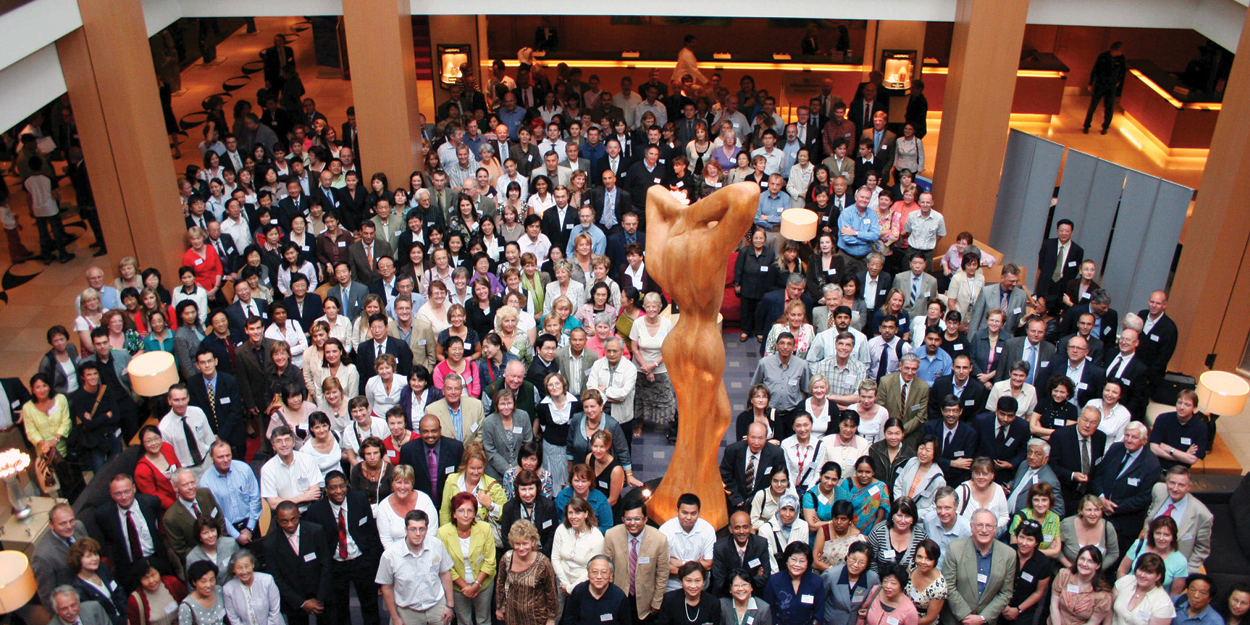
20 years of fostering talent
Professor John Chalmers AC has been part of The George Institute’s story from the very beginning.
John, now a Senior Director at the Institute and a Professor of Medicine at UNSW Sydney, was instrumental in laying the foundations for The George Institute.
The Institute's first major successes were the PROGRESS and ADVANCE trials of the early 2000s, which looked at strokes and diabetes, respectively. John was one of the two principal investigators, with [co-founder] Professor Stephen MacMahon AO, for both studies, which set firm foundations for the Institute’s future growth.
“I had known about Stephen’s outstanding work in cardiovascular epidemiology for some time but it wasn’t until 1996 that I met Robyn, who was working in the injury field at the time,” John says. “Stephen and I began collaborating on several big projects but it took another few years to formally establish the Institute.”
Over the past two decades, the Institute has gone from strength to strength, conducting landmark study after landmark study. John says core to this success has been attracting outstanding individuals driven by a relentless desire to be a force for good in the world.
“One of the great things about the Institute is that it’s been able to recruit, foster and encourage talented young people and help them mature and develop,” John explains. “It’s always given people the opportunity to reach for the stars, to go for big, demanding and impactful projects.”
Such opportunities have also meant that researchers have stayed for much longer at the Institute than is usual in the sector, with many having spent almost their entire careers there. Again, this is a source of immense satisfaction and pride for John, who has mentored a number of these now world-class researchers from their earliest days at the Institute.
"Time and time again, the Institute has hired young people, given them a go and seen them develop into international stars. That's what I've been most impressed by over the years," he says.
Looking back, John is understandably proud that the organisation he supported from its earliest days has so quickly gone from a tiny shared office with just a handful of staff, to the top independent research institute in Australia, as ranked by the Times Higher Education in 2018.
“The Institute's always been a stimulating place to work and that's why it done so well,” John explains. “There’s a real sense that if you can think of something big, then it’s achievable. Researchers learn here that nothing is necessarily beyond our scope, no matter how overwhelming or tough it might sound. It's still worth a try.”
He's also confident that the future holds the promise of even greater achievements.
And the reason?
“We’re breaking new ground time after time,” John says. “We’re always at the frontier of research, pushing at the edges – that’s a very special kind of excitement for driving people to greater successes.”
Celebrating 20 years: John’s top moments
- The vision: "They wanted to go beyond the research into translating it into real gains for the health of the population. They wanted to go beyond the developed world and impact the massive populations of Asia, Latin America and Africa, where two-thirds of the world's population exists.”
- The recognition: I think what I'm most proud of really is that the Institute has been recognised as the number one independent research organisation in Australia in such a short space of time.”
- The PROGRESS study: "PROGRESS was a resounding success and helped to launch the Institute with a big bang. Between 35-40% of its patients were in China, Japan, India quite deliberately, so we could demonstrate that they suffered equally and benefited equally from the treatments."

